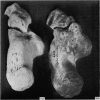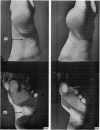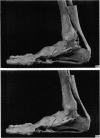Abstract
The calcaneocuboid joint was studied in ligamentous specimens of ten human feet, and in skeletons of two gorillas (Gorilla gorilla beringei), six chimpanzees (Pan troglodytes), three orangutans (Pongo pygmaeus) and 25 human feet. The movement of the transverse tarsal joint was further studied in a living foot on a walk-way with a glass plate inserted, and with an underlying mirror. In man the joint is shaped as an asymmetrical sector of one end of an hour-glass shaped surface of revolution with its main axis oriented longitudinally in the foot. The calcaneocuboid joint becomes close packed by a pronation of the forefoot in relation to the hind foot because of a congruency between the joint surfaces obtained in this position and because the calcaneus overhangs the cuboid dorsally and stops the movement. At low gear push off the foot is inverted and the calcaneocuboid joint loose packed. The stresses are absorbed across the fibular, postaxial border of the foot. At high high gear push off there is a functional pronation of the forefoot with a stabilization of the transverse tarsal joint and a more effective tightening of the plantar aponeurosis. The foot becomes a rigid lever for propulsion. In contrast to the human condition, the anthropoid calcaneus has an anteromedial extension associated with symmetry of the calcaneocuboid joint. The calcaneus does not overhang the cuboid and there appears to be no close packed position. Correspondingly, the anthropoid foot has a mid-tarsal break at each push off in addition to the metatarsophalangeal break.
Full text
PDF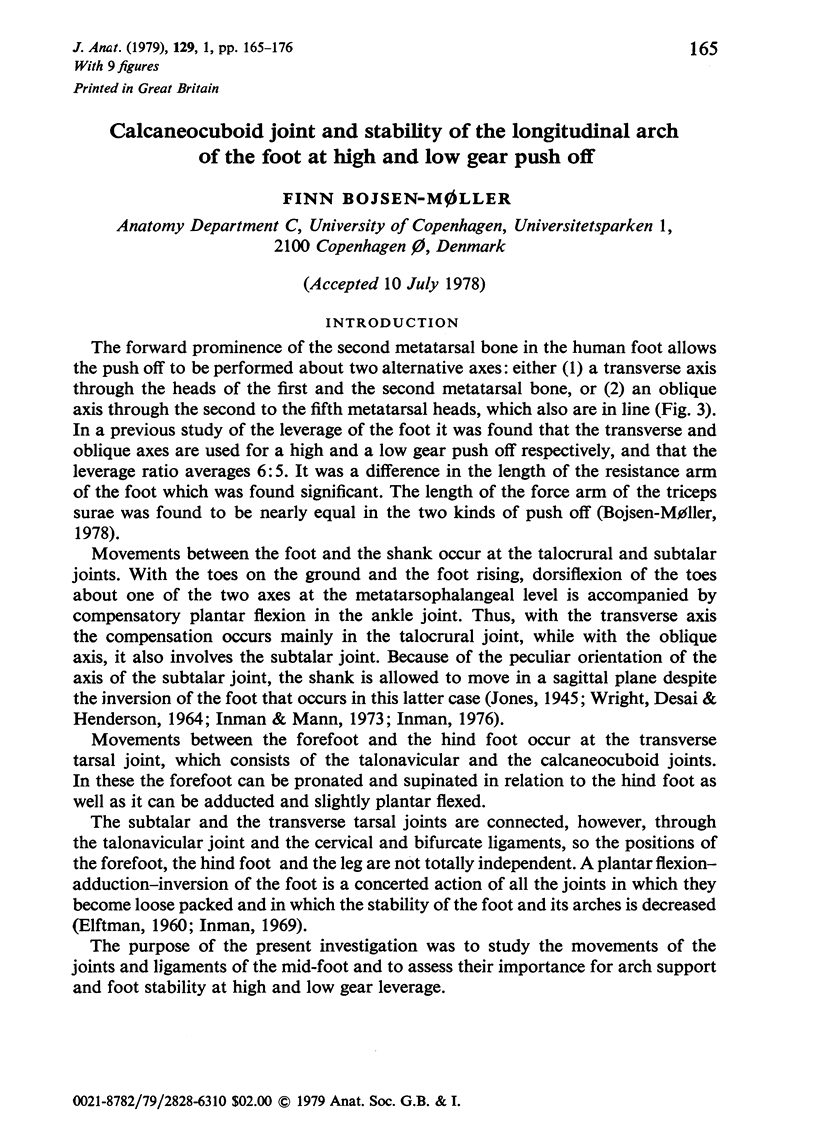
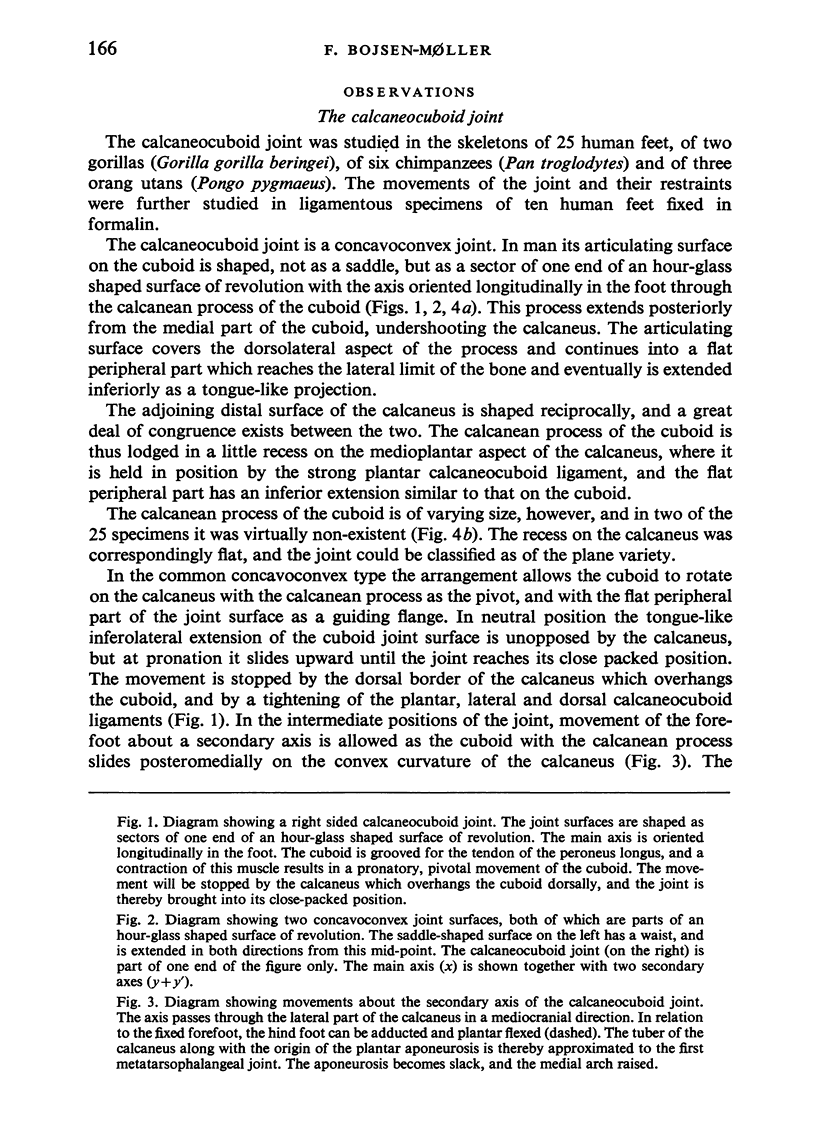
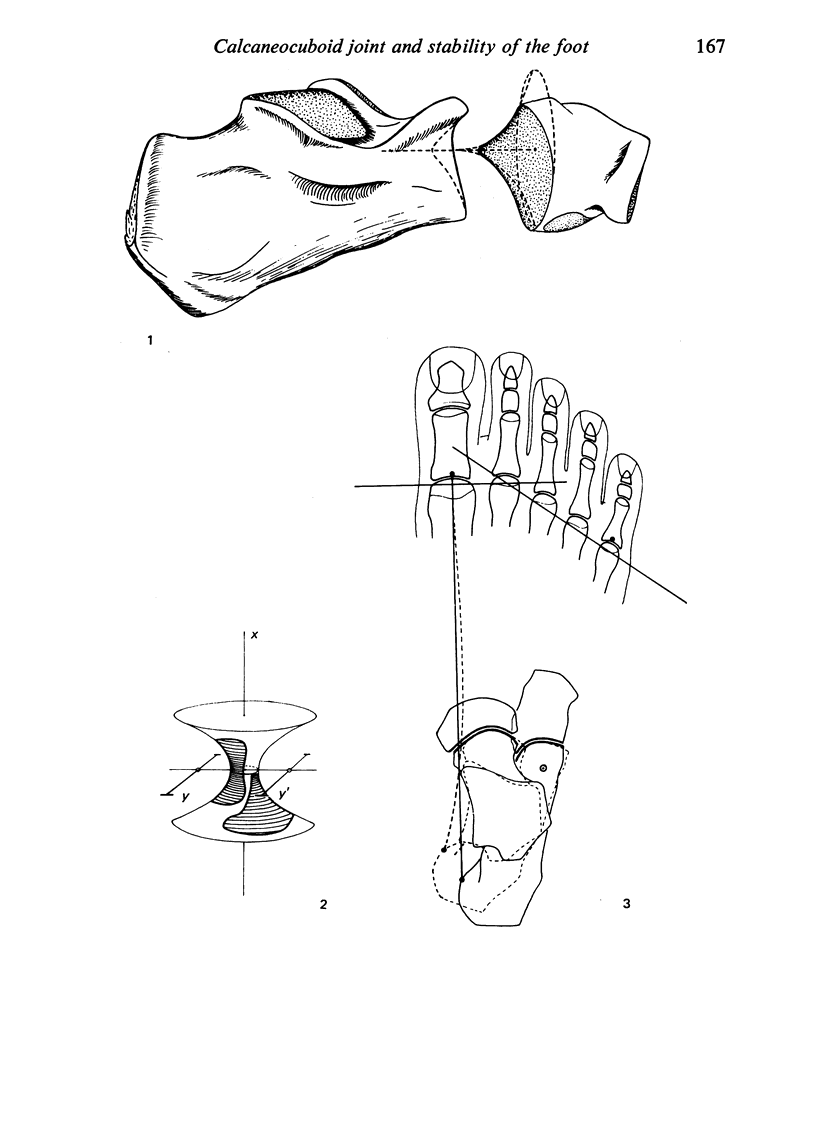
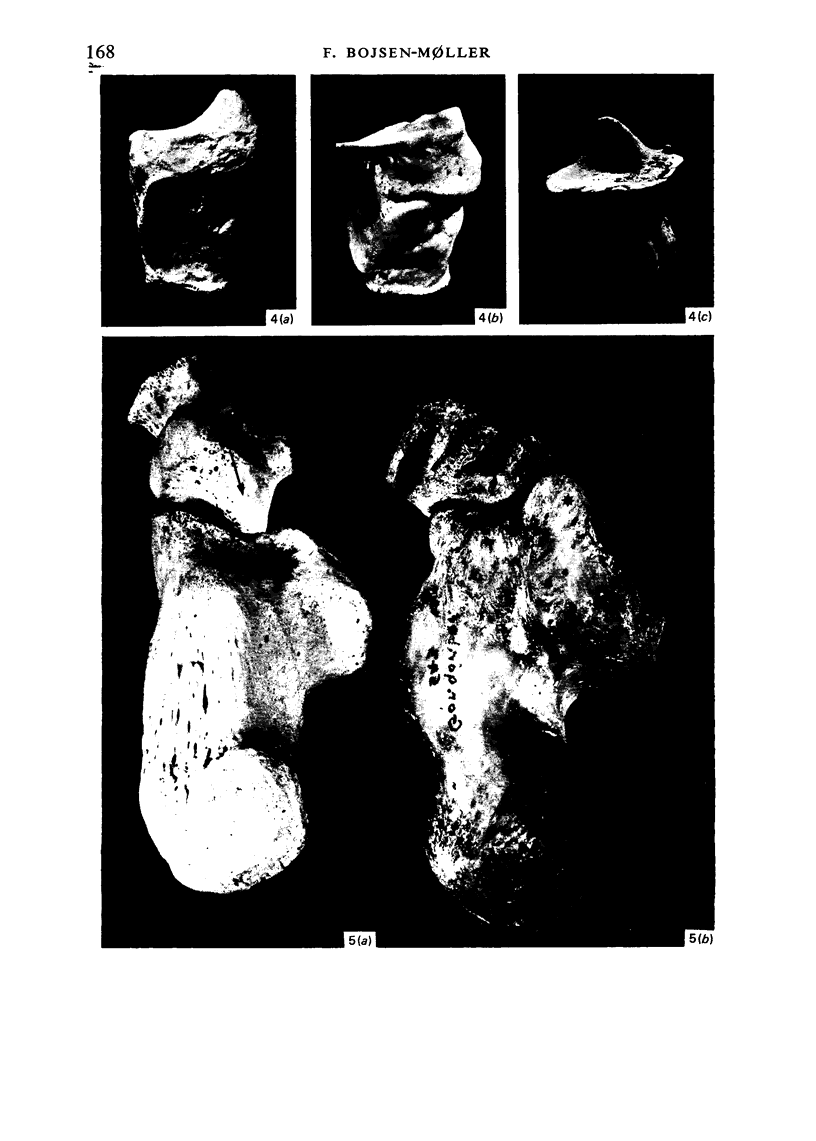
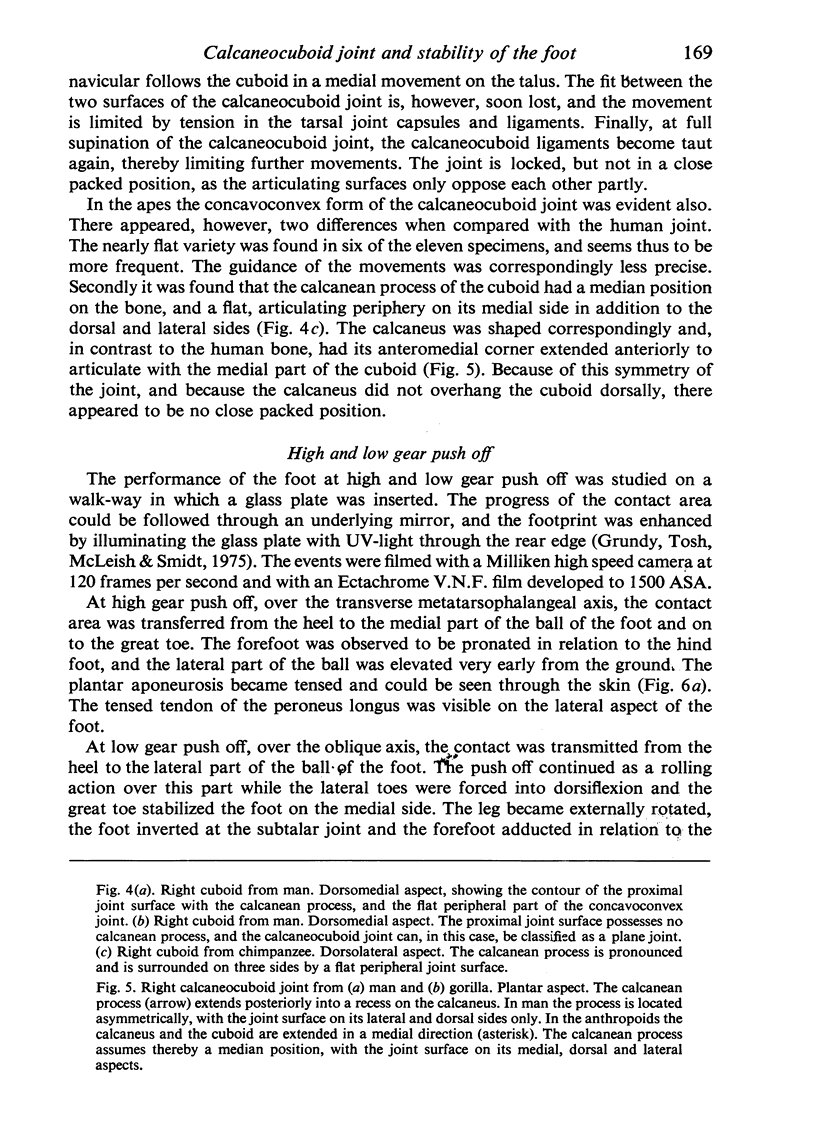
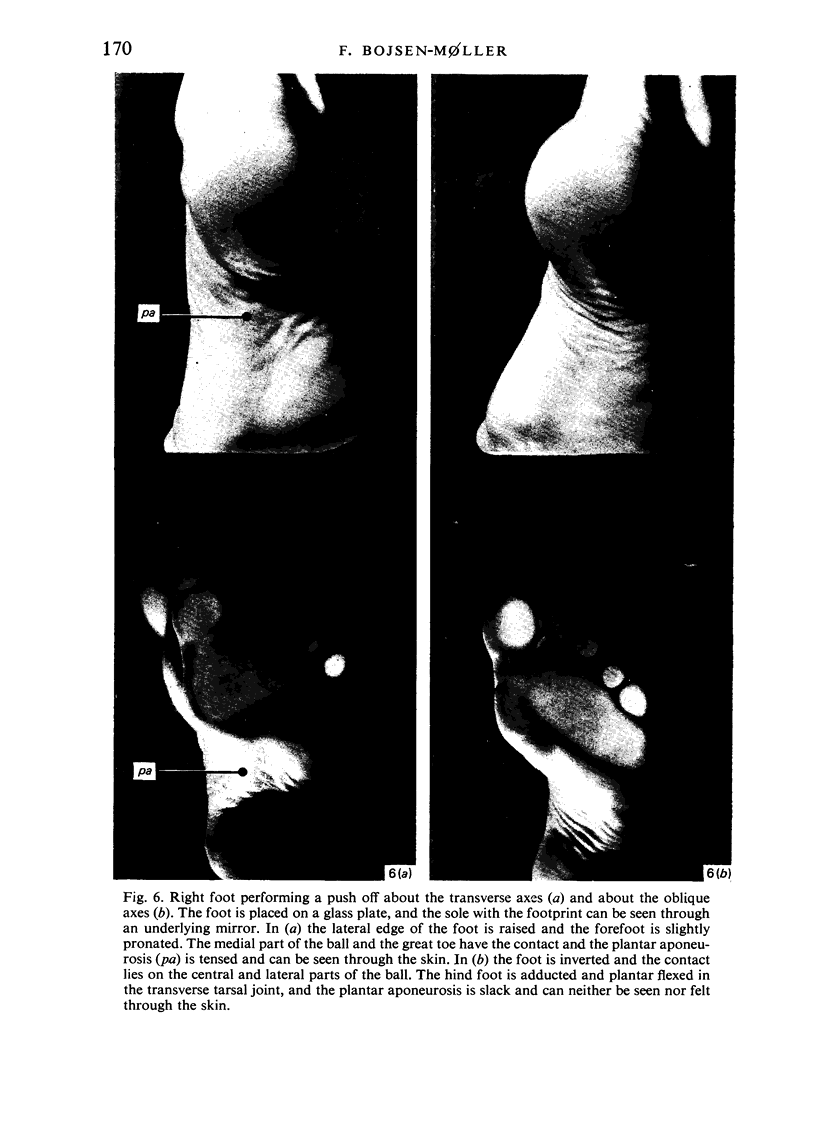
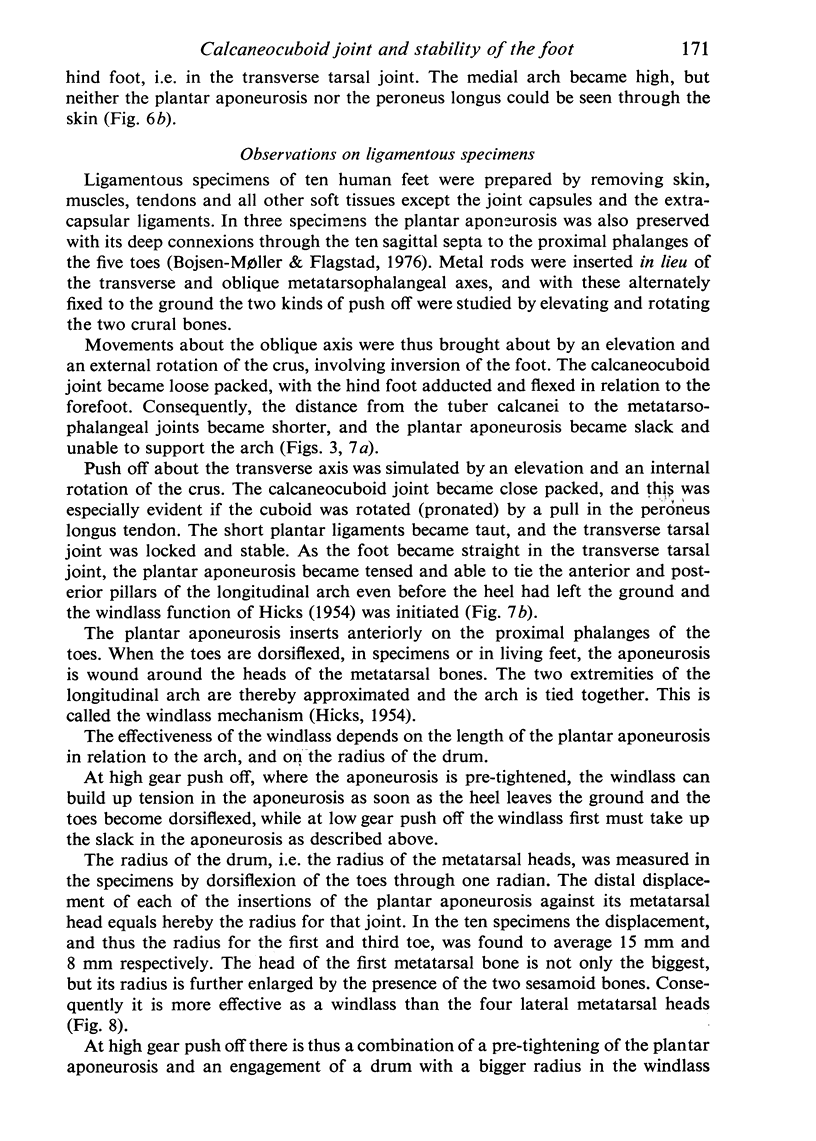
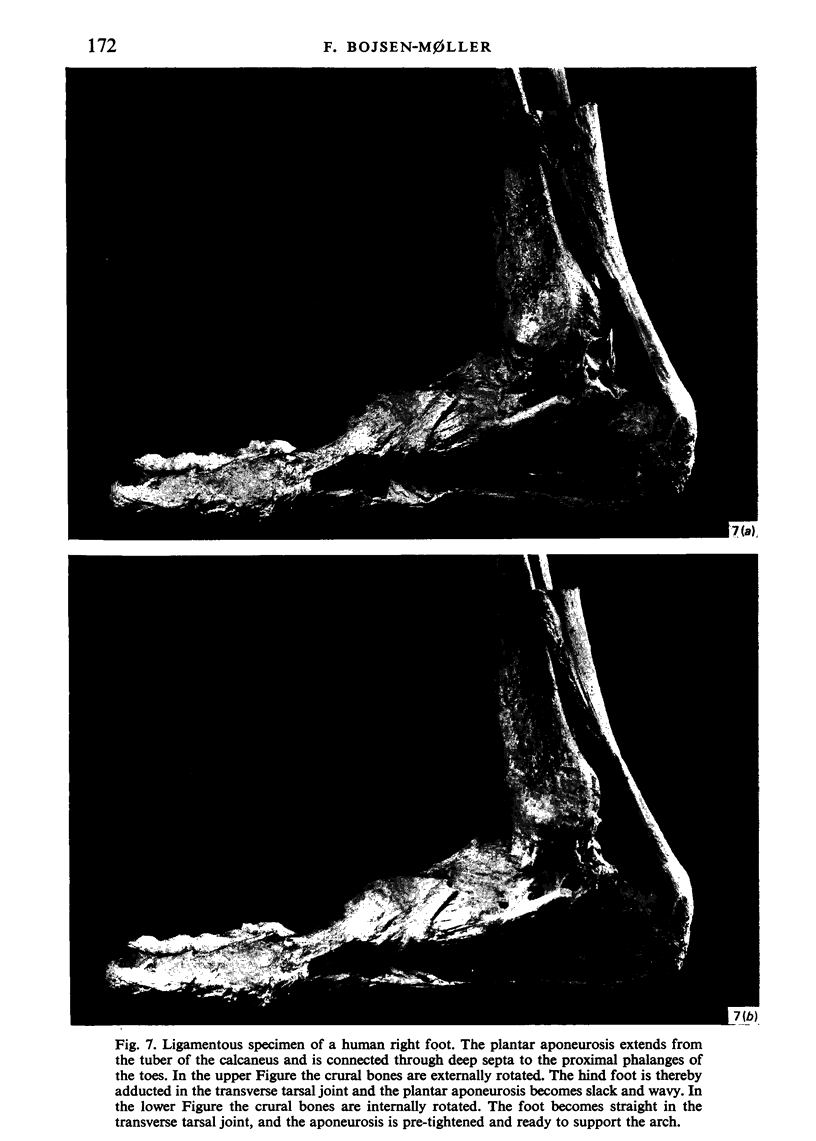
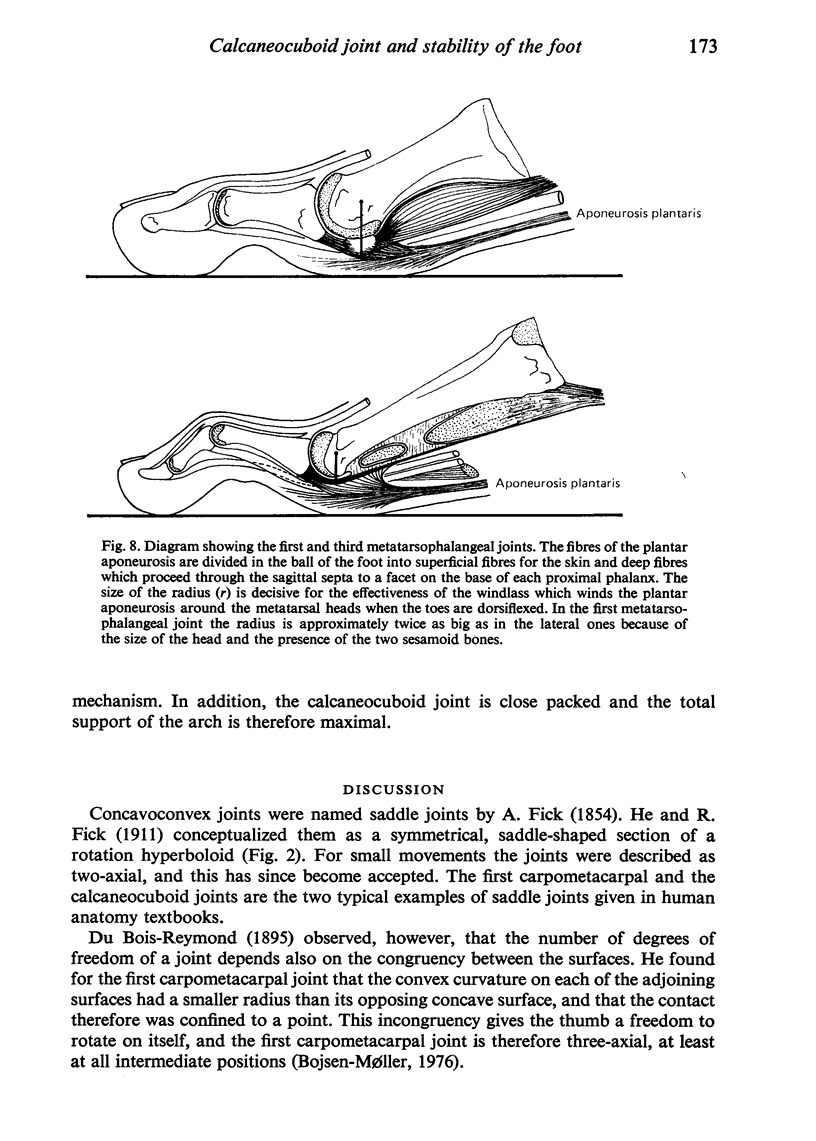
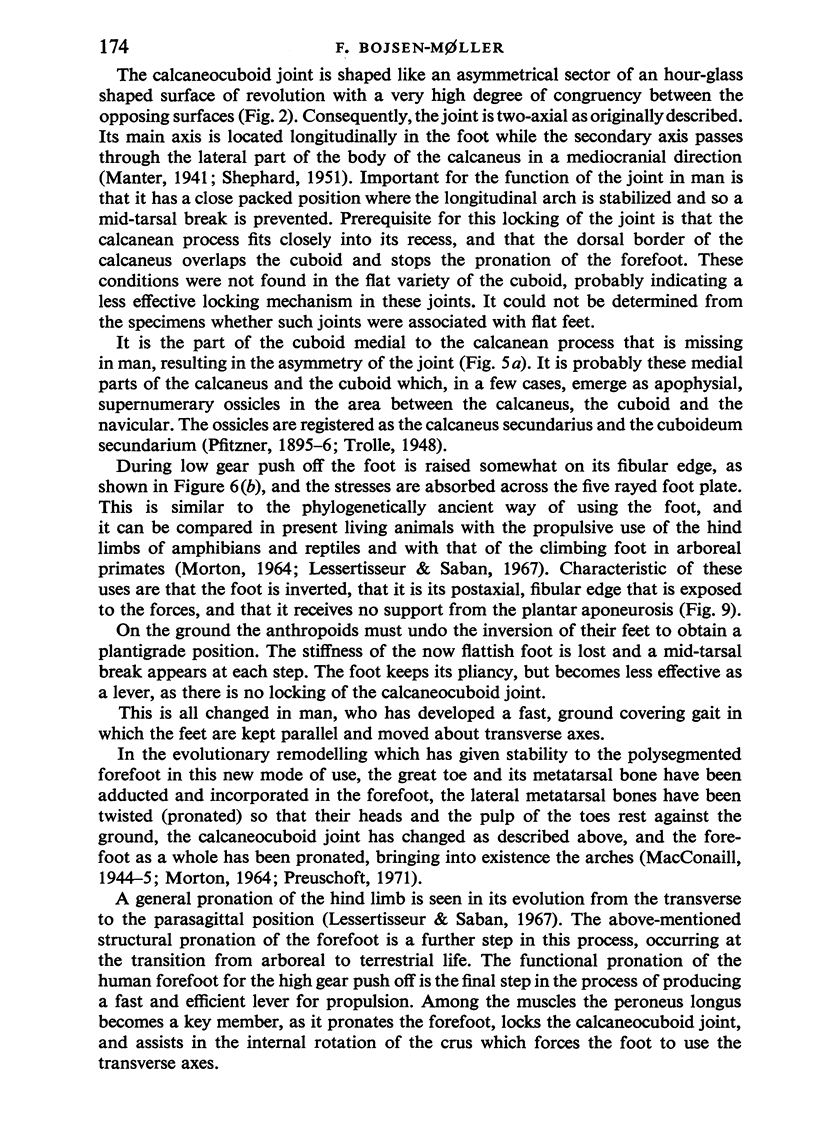
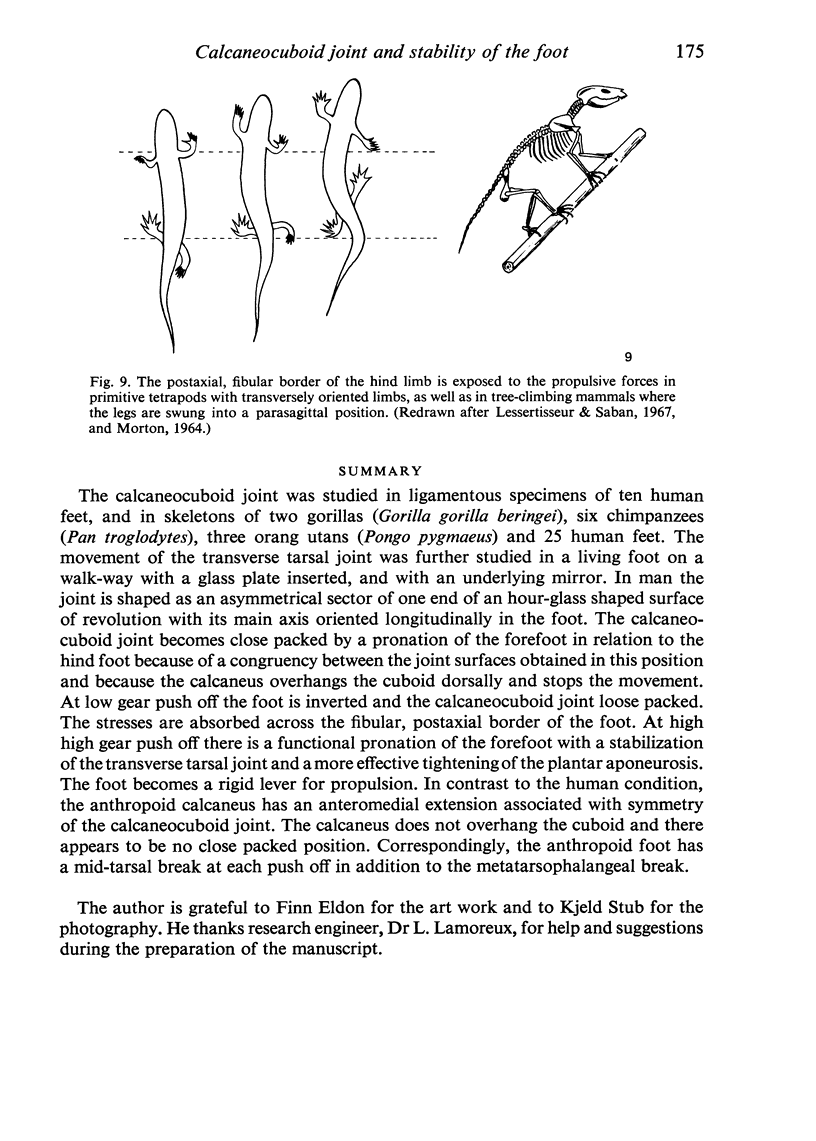
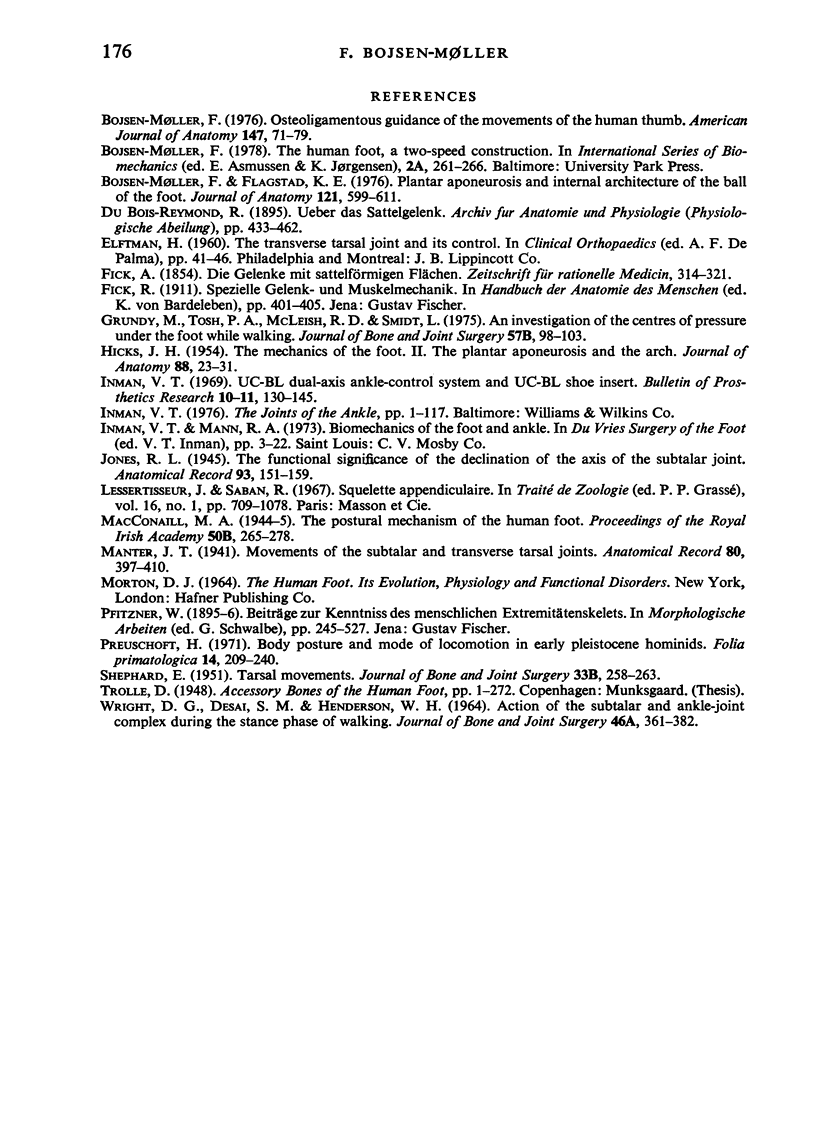
Images in this article
Selected References
These references are in PubMed. This may not be the complete list of references from this article.
- Bojsen-Moller F., Flagstad K. E. Plantar aponeurosis and internal architecture of the ball of the foot. J Anat. 1976 Jul;121(Pt 3):599–611. [PMC free article] [PubMed] [Google Scholar]
- Bojsen-Moller F. Osteoligamentous guidance of the movements of the human thumb. Am J Anat. 1976 Sep;147(1):71–80. doi: 10.1002/aja.1001470106. [DOI] [PubMed] [Google Scholar]
- ELFTMAN H. The transverse tarsal joint and its control. Clin Orthop. 1960;16:41–46. [PubMed] [Google Scholar]
- Grundy M., Tosh P. A., McLeish R. D., Smidt L. An investigation of the centres of pressure under the foot while walking. J Bone Joint Surg Br. 1975 Feb;57(1):98–103. [PubMed] [Google Scholar]
- SHEPHARD E. Tarsal movements. J Bone Joint Surg Br. 1951 May;33B(2):258–263. [PubMed] [Google Scholar]
- WRIGHT D. G., DESAI S. M., HENDERSON W. H. ACTION OF THE SUBTALAR AND ANKLE-JOINT COMPLEX DURING THE STANCE PHASE OF WALKING. J Bone Joint Surg Am. 1964 Mar;46:361–382. [PubMed] [Google Scholar]




